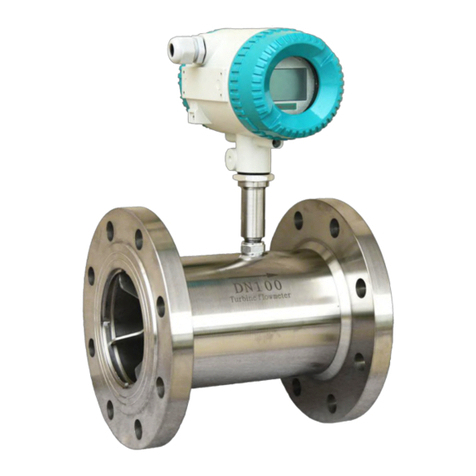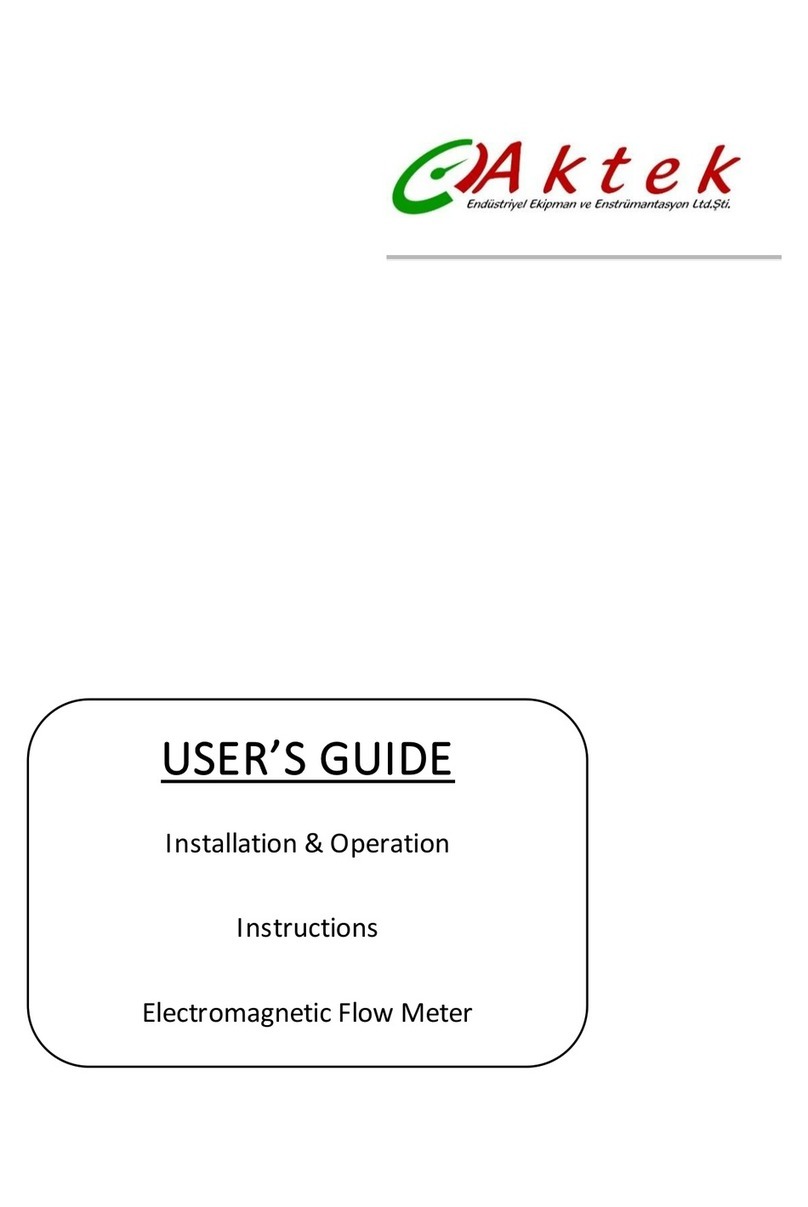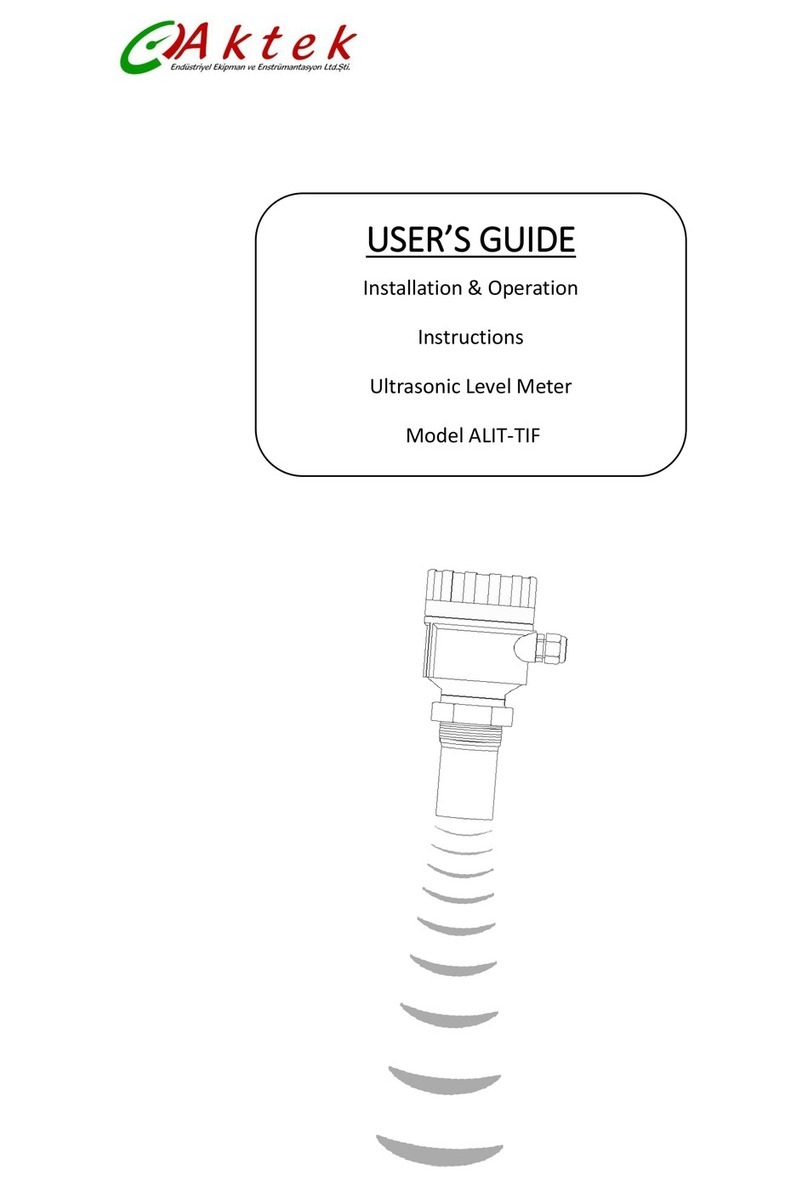
www.aktek.com.tr
measurements.
To achieve the most accurate measurements possible, it is generally advisable to
always calibrate the gauge to a sample piece of known thickness. Material composition (and
thus, its sound velocity) sometimes varies from lot to lot and from manufacturer to
manufacturer. Calibration to a sample of known thickness will ensure that the gauge is set
as closely as possible to the sound velocity of the material to be measured.
4.3.3 Two Point Calibration
Note: This procedure requires that the operator has two known thickness points on the test
piece that are representative of the range to be measured.
1) Perform a Probe-Zero.
2) Apply couplant to the sample piece.
3) Press the transducer against the sample piece, at the first/second calibration point,
making sure that the transducer sits flat against the surface of the sample. The display
should show some (probably incorrect) thickness value, and the coupling status
indicator should appear steadily.
4) Having achieved a stable reading, remove the transducer. If the displayed thickness
changes from the value shown while the transducer was coupled, repeat step 3.
5) Press the key. The MM (or IN) symbol should begin flashing.
6) Use the key and the key to adjust the displayed thickness up or down, until it
matches the thickness of the sample piece.
7) Press the key. The display will flash 1OF2. Repeat steps 3 through 6 on the second
calibration point.
8) Press the key, so that The M/S (or IN/μS) symbols are flashing. The gauge will now
display the sound velocity value it has calculated based on the thickness values that
were entered in step 6.
9) Press the key once more to exit the calibration mode. The gauge is now ready to
perform measurements within this range.
4.4 Making Measurements
When the tool is displaying thickness measurements, the display will hold the last value
measured, until a new measurement is made.
In order for the transducer to do its job, there must be no air gaps between the
wear-face and the surface of the material being measured. This is accomplished with the
use of a “coupling” fluid, commonly called “couplant”. This fluid serves to “couple”, or
transfer, the ultrasonic sound waves from the transducer, into the material, and back again.
Before attempting to make a measurement, a small amount of couplant should be applied to
the surface of the material being measured. Typically, a single droplet of couplant is
sufficient.
After applying couplant, press the transducer (wearface down) firmly against the area to
be measured. The coupling status indicator should appear, and a digit number should
appear in the display. If the instrument has been properly “zeroed” and set to the correct
sound velocity, the number in the display will indicate the actual thickness of the material
directly beneath the transducer.
If the coupling status indicator does not appear, not stable, or the numbers on the
display seem erratic, firstly check to make sure that there is an adequate film of couplant






























